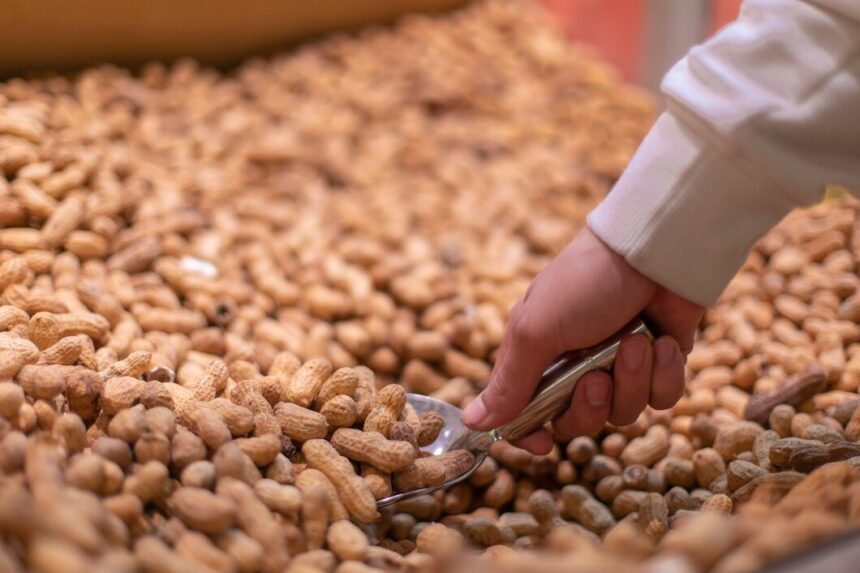Peanuts, or groundnuts, are a staple crop in South Africa, valued for their nutritional content and economic importance. To maximize both quality and yield, farmers can employ a range of proven techniques and best practices tailored to local conditions. Here’s a comprehensive guide on how to enhance peanut production effectively:
1. Soil Preparation and Management:
Proper soil preparation is fundamental to peanut cultivation. Conduct soil tests to assess nutrient levels and pH, ensuring they are suitable for peanut growth. Optimal pH ranges between 5.8 and 6.2. Implement soil conservation practices like minimum tillage to improve soil structure and reduce erosion.
2. Crop Rotation and Rotation Patterns:
Rotate peanuts with non-leguminous crops to break disease cycles, improve soil fertility, and reduce pest pressure. Ideal rotation crops include cereals like maize or sorghum. Rotate peanuts on a 3 to 4-year cycle to maintain soil health and productivity.
3. Seed Selection and Treatment:
Choose certified seeds of high-yielding and disease-resistant varieties suited to local growing conditions. Treat seeds with fungicides and insecticides before planting to protect against soil-borne pathogens and pests, ensuring better germination and early plant vigor.
4. Planting Techniques:
Plant peanuts in well-prepared, weed-free seedbeds. Optimal planting depth ranges from 3 to 5 centimeters, depending on soil moisture levels. Ensure adequate spacing (typically 10 to 15 centimeters between seeds in rows spaced 60 to 75 centimeters apart) to promote airflow and reduce disease incidence.
5. Irrigation Management:
Peanuts require consistent moisture during critical growth stages, especially flowering and pod development. Implement efficient irrigation methods such as drip irrigation or furrow irrigation to optimize water use efficiency. Monitor soil moisture levels regularly to avoid both water stress and waterlogging.
6. Fertilization Practices:
Apply balanced fertilizers based on soil test recommendations or crop nutrient requirements. Peanuts have high potassium demands during pod development. Incorporate nitrogen-fixing legumes in rotations to naturally improve soil nitrogen levels.
7. Integrated Pest Management (IPM):
Implement IPM strategies to minimize pest and disease damage. Monitor fields regularly for signs of pests like aphids, thrips, and leaf miners, and diseases such as leaf spot and rust. Use cultural controls, biological controls, and judicious application of pesticides when necessary.
8. Weed Control:
Maintain effective weed control throughout the growing season. Use pre-emergence herbicides before planting and post-emergence herbicides, if necessary, taking care to follow label instructions to prevent crop injury. Hand-weeding may be necessary in localized areas.
9. Disease Management:
Practice crop rotation, use disease-resistant varieties, and adopt sanitation practices to manage diseases like early leaf spot and rust effectively. Apply fungicides preventively during critical growth stages if disease pressure is high.
10. Harvesting and Post-Harvest Handling:
Time harvesting when peanuts have reached physiological maturity (typically indicated by yellowing of leaves and pegs). Lift peanuts carefully to avoid damage to pods. Allow pods to dry in the field for a few days, weather permitting, before mechanically harvesting. Properly cure and store harvested peanuts to maintain quality and reduce aflatoxin contamination risks.
Implementing these techniques can significantly enhance the quality and yield of peanuts in South Africa. By adopting sustainable agricultural practices, leveraging technological advancements, and staying informed about best practices, farmers can optimize peanut production while ensuring environmental stewardship and economic viability. Continuous education and adaptation to local conditions are key to successful peanut farming in South Africa.
Join 'Farmers Mag' WhatsApp Channel
Get the latest Farming news and tips delivered straight to your WhatsApp
CLICK HERE TO JOIN






